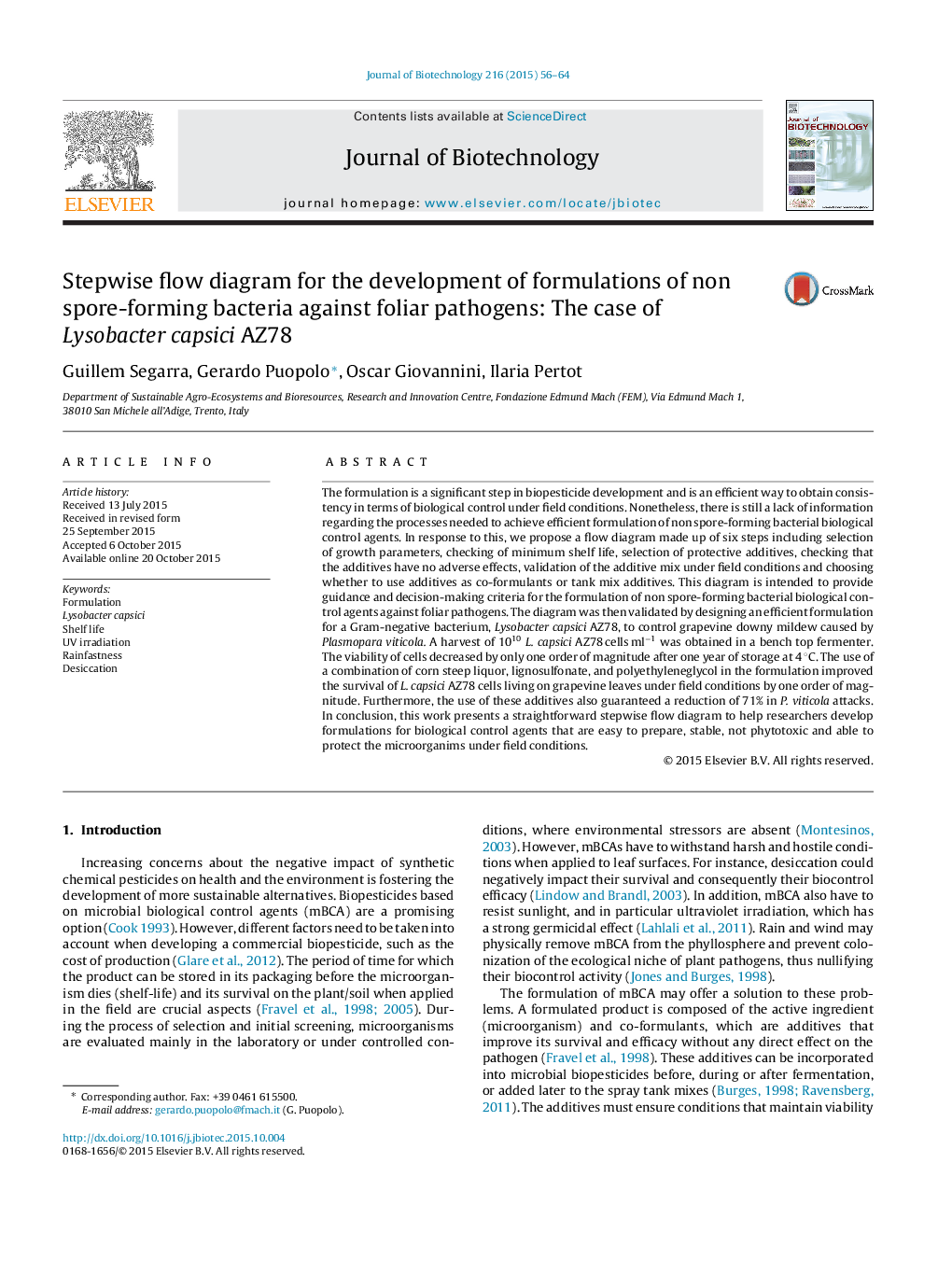| Article ID | Journal | Published Year | Pages | File Type |
|---|---|---|---|---|
| 22787 | Journal of Biotechnology | 2015 | 9 Pages |
•A stepwise flow diagram to develop formulations for biopesticides is presented.•It includes the selection of protecting additives and validation under field conditions.•A formulation for Lysobacter capsici AZ78 was developed following this procedure.
The formulation is a significant step in biopesticide development and is an efficient way to obtain consistency in terms of biological control under field conditions. Nonetheless, there is still a lack of information regarding the processes needed to achieve efficient formulation of non spore-forming bacterial biological control agents. In response to this, we propose a flow diagram made up of six steps including selection of growth parameters, checking of minimum shelf life, selection of protective additives, checking that the additives have no adverse effects, validation of the additive mix under field conditions and choosing whether to use additives as co-formulants or tank mix additives. This diagram is intended to provide guidance and decision-making criteria for the formulation of non spore-forming bacterial biological control agents against foliar pathogens. The diagram was then validated by designing an efficient formulation for a Gram-negative bacterium, Lysobacter capsici AZ78, to control grapevine downy mildew caused by Plasmopara viticola. A harvest of 1010L. capsici AZ78 cells ml−1 was obtained in a bench top fermenter. The viability of cells decreased by only one order of magnitude after one year of storage at 4 °C. The use of a combination of corn steep liquor, lignosulfonate, and polyethyleneglycol in the formulation improved the survival of L. capsici AZ78 cells living on grapevine leaves under field conditions by one order of magnitude. Furthermore, the use of these additives also guaranteed a reduction of 71% in P. viticola attacks. In conclusion, this work presents a straightforward stepwise flow diagram to help researchers develop formulations for biological control agents that are easy to prepare, stable, not phytotoxic and able to protect the microorganims under field conditions.
